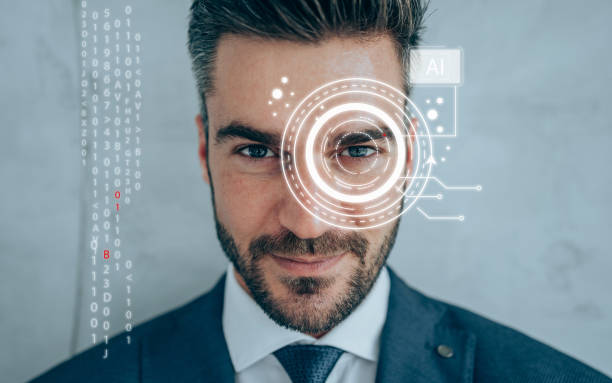
In today’s interconnected world, cybersecurity has become a fundamental necessity for individuals, businesses, and governments. The importance of robust cybersecurity measures cannot be overstated with the rapid evolution of technology and the increasing sophistication of cyber threats.
As we navigate through 2024, several key factors underscore why cybersecurity is more crucial than ever.
The Proliferation of Cyber Threats
Cyber threats are evolving at an unprecedented pace. Hackers and cybercriminals are constantly developing new methods to exploit system, network, and device vulnerabilities. From ransomware attacks to phishing schemes and data breaches, the range of potential threats is vast and ever-changing. In 2024, the frequency and complexity of these attacks have only increased, making it imperative for individuals and organizations to stay vigilant and proactive in their cybersecurity efforts. Even platforms like VyVyManga need to implement stringent cybersecurity measures to protect their users from these evolving threats.
Ransomware Attacks
Ransomware remains one of the most pervasive and damaging types of cyber attacks. In these attacks, cybercriminals encrypt a victim’s data and demand a ransom in exchange for the decryption key. High-profile ransomware attacks have targeted hospitals, educational institutions, and critical infrastructure, causing significant disruptions and financial losses. The impact of these attacks highlights the need for robust security protocols and regular data backups to mitigate potential damages.
Phishing Schemes
Phishing schemes have become more sophisticated, making it harder for individuals to distinguish between legitimate and fraudulent communications. Cybercriminals use social engineering tactics to trick victims into revealing sensitive information, such as login credentials or financial details. In 2024, businesses and individuals must prioritize cybersecurity awareness training to recognize and respond to phishing attempts effectively.
Data Breaches
Data breaches continue to pose a significant threat to both individuals and organizations. The exposure of sensitive information, such as personal identification numbers, financial records, and intellectual property, can lead to identity theft, financial loss, and reputational damage. Implementing strong access controls, encryption, and regular security audits are essential steps in preventing data breaches and protecting valuable information.
The Expanding Attack Surface
The digital landscape is expanding rapidly, with more devices and systems connected to the internet than ever before. The rise of the Internet of Things (IoT), smart devices, and remote work has increased the attack surface for cyber threats. Each connected device represents a potential entry point for cybercriminals, making comprehensive cybersecurity strategies essential for safeguarding against potential vulnerabilities.
Internet of Things (IoT)
The proliferation of IoT devices has transformed the way we live and work. From smart homes to industrial automation, IoT devices offer numerous benefits but also present significant security challenges. Many IoT devices lack robust security features, making them attractive targets for hackers. Ensuring that these devices are regularly updated with the latest security patches and using strong, unique passwords for each device can help mitigate the risks associated with IoT.
Remote Work
The COVID-19 pandemic accelerated the shift towards remote work, a trend that continues to shape the modern workplace in 2024. While remote work offers flexibility and convenience, it also introduces new cybersecurity risks. Employees accessing corporate networks from home or public Wi-Fi networks may inadvertently expose sensitive information to cyber threats. Organizations must implement secure remote access solutions, such as virtual private networks (VPNs) and multi-factor authentication (MFA), to protect their remote workforce.
Regulatory and Compliance Requirements
As cyber threats become more prevalent, governments and regulatory bodies are enacting stricter cybersecurity regulations and compliance requirements. Organizations must adhere to these regulations to avoid legal repercussions and maintain their reputation. In 2024, compliance with data protection laws, such as the General Data Protection Regulation (GDPR) and the California Consumer Privacy Act (CCPA), is crucial for businesses operating globally.
General Data Protection Regulation (GDPR)
The GDPR, implemented by the European Union, sets stringent guidelines for the collection, storage, and processing of personal data. Non-compliance can result in hefty fines and legal consequences. Businesses must ensure that they have robust data protection measures in place, conduct regular audits, and provide transparency in their data handling practices to comply with GDPR requirements.
California Consumer Privacy Act (CCPA)
The CCPA grants California residents greater control over their personal information and imposes obligations on businesses to protect consumer data. Organizations that collect and process the data of California residents must comply with CCPA regulations, which include providing consumers with the right to access, delete, and opt out of the sale of their personal information. Compliance with CCPA is essential for maintaining consumer trust and avoiding regulatory penalties.
The Role of Artificial Intelligence and Machine Learning
Artificial intelligence (AI) and machine learning (ML) technologies are playing an increasingly vital role in cybersecurity. These technologies can analyze vast amounts of data in real time, identify patterns, and detect anomalies that may indicate cyber threats. In 2024, leveraging AI and ML can significantly enhance threat detection and response capabilities, enabling organizations to stay one step ahead of cybercriminals.
Enhanced Threat Detection
AI-powered cybersecurity solutions can monitor network traffic, identify suspicious activities, and flag potential threats in real time. By analyzing historical data and learning from previous incidents, these systems can improve their accuracy and reduce false positives. This proactive approach allows organizations to detect and mitigate threats before they cause significant damage.
Automated Incident Response
Machine learning algorithms can automate incident response processes, enabling faster and more efficient handling of security incidents. Automated systems can isolate affected systems, block malicious activities, and initiate remediation steps without human intervention. This reduces the response time and minimizes the impact of cyber-attacks, helping organizations maintain business continuity. Additionally, services like Image Annotation Services play a crucial role in training these algorithms to accurately identify and respond to threats.
Building a Cybersecurity Culture
Effective cybersecurity requires more than just technology; it necessitates a culture of security awareness and vigilance. Organizations must foster a cybersecurity culture where employees understand the importance of protecting sensitive information and are empowered to take proactive measures.
Employee Training and Awareness
Regular cybersecurity training and awareness programs are essential for educating employees about the latest threats and best practices. Employees should be trained to recognize phishing attempts, use strong passwords, and report suspicious activities promptly. Creating a culture of security awareness can significantly reduce the risk of human error, which is often a major factor in successful cyber attacks.
Incident Response Planning
Having a well-defined incident response plan is critical for effectively managing and mitigating cyber incidents. Organizations should conduct regular drills and simulations to test their incident response capabilities and ensure that all stakeholders are familiar with their roles and responsibilities. A robust incident response plan can minimize the impact of cyber-attacks and facilitate a swift recovery.
Conclusion
As we progress through 2024, the importance of cybersecurity cannot be overstated. The evolving threat landscape, expanding attack surface, regulatory requirements, and advancements in AI and machine learning all underscore the need for robust cybersecurity measures. Even seemingly unrelated areas, like the puzzle game, Lead In To Lingo, must consider cybersecurity to protect user data and ensure a safe gaming experience.
By staying informed, implementing best practices, and fostering a culture of security awareness, individuals and organizations can better protect themselves against the ever-present threat of cyber attacks. Investing in cybersecurity is not just a technical necessity but a fundamental component of safeguarding our digital future.






